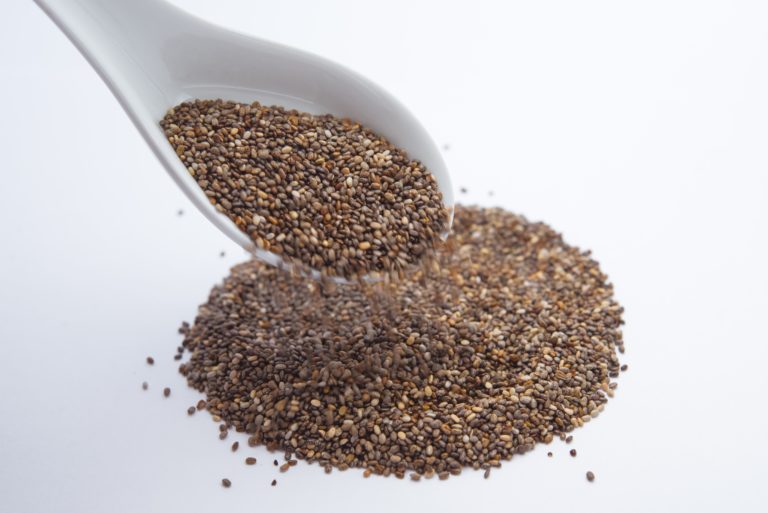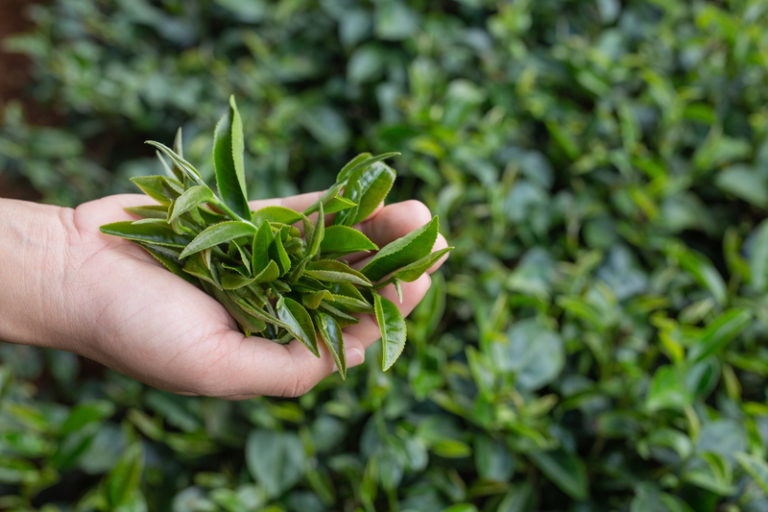Blueberries: The Sweet and Nutritious Super fruit
Blueberries are a tasty and nutritious fruit that can be served fresh, preserved, or dried. Numerous health benefits have been associated with their high fiber, vitamin, and mineral content. Let’s learn more about the wonderful world of blueberries and find out why they’re good for you and taste great. Allow us to begin with the basics.
What are Blueberries?
Small, round, and often bluish-purple berries called blueberries grow on low Vaccinium genus bushes. People like these fruits because they taste sweet and sour at the same time. Blueberries are originally from North America, but they are now popular all over the world because they taste great and are good for humans in many ways.
Why Grow Blueberries?
Growing blueberries can be a rewarding experience for several reasons:
Delicious and Nutritious: Blueberries are both delicious and extremely nutritious. They are rich in vitamins, minerals, and antioxidants, making them a nutritious addition to a healthy diet.
Fresh, Homegrown Flavor: Typically, homegrown blueberries have a more robust flavor than those purchased in stores. You can experience the gratification of picking and consuming berries from your own garden.
Health Benefits: The health benefits of blueberries include promoting heart health, enhancing cognitive function, and possibly reducing the risk of chronic diseases. By cultivating your own, you can have ready access to these nutritious fruits.
Low Maintenance: Once established, blueberry plants are relatively low-maintenance. They require little maintenance and produce a bountiful harvest every year.
Economical: Over time, growing your own blueberries can be cost-effective. You can save money compared to buying them regularly from the store.
Variety of Uses: Blueberries are versatile and can be used in a variety of culinary creations, including raw snacking, baking, jam-making, and even savory dishes. Your native berries can be utilized in a variety of dishes.
Gardening Enjoyment: In general, gardening can be a satisfying hobby. Blueberry bushes are visually appealing, and caring for them can be a relaxing and delightful hobby.
Educational: If you have children or are interested in botany, blueberry planting can be a learning experience. It is an opportunity to learn about plant maintenance, the natural growth cycle, and the value of homegrown, fresh food.
Sustainable: Growing your own food reduces your carbon footprint, as it cuts down on the transportation and packaging associated with store-bought produce.
Self-Sufficiency: Having a source of fresh fruit in your own backyard can contribute to a sense of self-sufficiency and food security.
Environmental Benefits: Blueberry plants provide sustenance and shelter for local wildlife, such as birds and pollinators, thereby promoting a healthier ecosystem.
In addition to providing fresh, delicious produce, growing blueberries provides health benefits, cost savings, and a sense of independence. It’s a gratifying, low-maintenance addition to your garden that can improve both your diet and your horticultural experience.

Characteristics of the Blueberries
Blueberries are known for their distinctive characteristics, which make them a unique and popular fruit. Here are some of the key characteristics of blueberries:
- Size and Shape: Blueberries are small, round berries that are typically about the size of a marble, although size can differ slightly depending on variety.
- Color: According to their appellation, ripe blueberries are deep blue or purple-blue in color. When mature, some varieties may also be reddish or black.
- Taste: Blueberries have a sweet and slightly tangy flavor. They are often described as having a unique combination of sweetness and acidity.
- Texture: Blueberries have a thin, smooth skin that encases a soft and juicy interior. They are not overly juicy, like some other fruits.
- Nutrient Profile: Blueberries are very nutritious, comprising a variety of vitamins (particularly vitamin C and vitamin K), minerals (such as manganese), dietary fiber, and antioxidants. They are known for their high levels of antioxidants.
- Health Benefits: Due to their antioxidant properties, blueberries are associated with numerous health benefits, including enhanced heart health, cognitive function, and possible cancer prevention.
- Growth Habit: Depending on the variety, blueberry plants are typically low-growing shrubs that can reach heights between 1 and 7 feet. They have small, elliptical leaves and white or pinkish bell-shaped blossoms.
- Variety: There are numerous species and varieties of blueberries, including highbush, lowbush, and rabbiteye, each with its own size, flavor, and climate adaptability characteristics.
- Growing Seasons: Blueberries are typically in season during the summer, but their availability can be extended by preserving and processing throughout the year.
- Versatility: Blueberries are versatile in their culinary uses. They can be enjoyed fresh, added to cereals, salads, and yogurt, used in baking (muffins, pies, and pancakes), blended into smoothies, and even used in savory dishes and sauces.
- Cultivation and Maintenance: Blueberry plants are relatively low-maintenance once established, making them suitable for home gardening. They require well-drained, acidic soil and benefit from pruning and proper care.
- Longevity: Blueberry bushes can live for decades and continue to produce fruit year after year if well cared for.
- Cultural Significance: Blueberries have historical and cultural significance, having been used by Native Americans for centuries and celebrated in various festivals and traditions.
Blueberries are small, sweet, and nutritious berries with a unique combination of characteristics, making them a beloved and versatile fruit with both culinary and health appeal.
The Health Benefits of Blueberries
Blueberries are often hailed as a superfood for good reason: they offer a wide range of health benefits. Here’s a closer look at the many ways blueberries can contribute to your well-being:
Rich in Antioxidants: Blueberries are packed with antioxidants, particularly anthocyanins, which help protect your cells from damage caused by free radicals. This antioxidant content is associated with various health benefits.
Heart Health: Regular consumption of blueberries has been linked to a reduced risk of heart disease. The antioxidants and fiber in blueberries can help lower blood pressure, reduce cholesterol levels, and improve overall heart health.
Brain Function: Blueberries are often referred to as “brain berries.” Studies suggest that the antioxidants in blueberries may improve brain function, memory, and cognitive abilities, potentially reducing the risk of age-related cognitive decline.
Cancer Prevention: Some research indicates that the compounds in blueberries may help inhibit the growth of cancer cells and reduce the risk of certain types of cancer, such as colon and ovarian cancer.
Anti-Inflammatory Properties: Blueberries have anti-inflammatory effects, which can help reduce chronic inflammation, a factor in many chronic diseases.
Improved Digestion: The dietary fiber in blueberries promotes healthy digestion, prevents constipation, and supports a balanced gut microbiome.
Weight Management: Blueberries are relatively low in calories but high in fiber. This can help with weight management by promoting a feeling of fullness and reducing overall calorie intake.
Skin Health: The antioxidants in blueberries contribute to healthier, more radiant skin by protecting against skin cell damage caused by free radicals.
Blood Sugar Control: Blueberries have a relatively low glycemic index, meaning they have a minimal impact on blood sugar levels. This can be beneficial for individuals with diabetes or those looking to manage their blood sugar.
Eye Health: The antioxidants in blueberries, particularly lutein and zeaxanthin, may help protect the eyes from age-related vision problems like cataracts and macular degeneration.
Bone Health: Blueberries contain essential vitamins and minerals, such as vitamin K, which play a role in bone health and may help reduce the risk of osteoporosis.
Immune Support: The vitamin C content in blueberries helps boost the immune system, making your body better equipped to fight off infections and illnesses.
Improved Sleep: Some studies suggest that the antioxidants in blueberries may help improve sleep quality, making it easier to fall asleep and stay asleep.
It’s important to note that while blueberries offer many health benefits, they are most effective when part of a balanced and varied diet. Incorporating blueberries into your daily meals or snacks can be a delicious way to boost your health and well-being.
Nutritional value of blueberries
One cup of blueberries contains:
- 84 calories
- 21 grams of carbohydrates
- 4 grams of fiber
- 1 gram of protein
- 15 milligrams of vitamin C
- 36 micrograms of vitamin K
- 25 milligrams of manganese
- 14% of the daily recommended intake of dietary fiber
Blueberries and Disease Prevention
Blueberries have gained a reputation as a “superfood” due to their potential role in disease prevention. While they are not a magic cure-all, they do offer several health benefits that may help reduce the risk of certain diseases. Here’s how blueberries are connected to disease prevention:
1. Heart Disease: Blueberries are rich in antioxidants, particularly anthocyanins, which have been associated with a reduced risk of heart disease. These antioxidants help protect the heart by reducing oxidative stress and inflammation, lowering blood pressure, and improving cholesterol levels.
2. Cancer: Some studies suggest that the antioxidants and phytochemicals in blueberries can inhibit the growth of cancer cells. Specifically, blueberries have shown promise in reducing the risk of certain cancers, such as colon cancer and ovarian cancer.
3. Diabetes Management: Blueberries have a low glycemic index, which means they have a minimal impact on blood sugar levels. This makes them a suitable choice for people with diabetes or those at risk of developing diabetes. Regular consumption of blueberries may help control blood sugar and improve insulin sensitivity.
4. Cognitive Decline: Blueberries are often referred to as “brain food.” The antioxidants in blueberries may help improve cognitive function, memory, and protect the brain from age-related cognitive decline. This can be particularly beneficial in reducing the risk of conditions like Alzheimer’s disease.
5. Inflammation: Chronic inflammation is a key factor in many chronic diseases. Blueberries have anti-inflammatory properties, which can help reduce inflammation in the body and lower the risk of diseases associated with chronic inflammation, such as arthritis and inflammatory bowel disease.
6. Eye Health: Blueberries contain antioxidants like lutein and zeaxanthin, which help protect the eyes from age-related vision problems, including cataracts and macular degeneration. Consuming blueberries may contribute to maintaining good eye health.
7. Urinary Tract Health: Blueberries contain compounds that can help prevent urinary tract infections by inhibiting the growth of harmful bacteria in the urinary system.
8. Gut Health: The dietary fiber in blueberries promotes healthy digestion and supports a balanced gut microbiome. A healthy gut is linked to overall well-being and a lower risk of various diseases.
It’s important to note that while blueberries offer many health benefits, they should be part of a balanced diet and a healthy lifestyle. A diet rich in a variety of fruits, vegetables, whole grains, and lean proteins, along with regular physical activity, is essential for overall health and disease prevention. Additionally, individual results may vary, and it’s always a good idea to consult with a healthcare professional for personalized advice and recommendations.
How to Incorporate Blueberries Into Your Diet
Incorporating blueberries into your diet is easy and delicious. These versatile fruits can be used in a variety of ways to add flavor, nutrition, and a burst of antioxidants to your meals. Here are some simple and tasty ways to enjoy blueberries:
Fresh Snacking:
- The easiest way to enjoy blueberries is by eating them fresh, right out of the container. Wash them and keep a bowl of fresh blueberries in the refrigerator for a quick and healthy snack.
Breakfast Delights:
- Add a handful of blueberries to your morning cereal or oatmeal.
- Mix them into yogurt for a nutritious and tasty breakfast.
- Sprinkle blueberries on top of pancakes, waffles, or French toast.
- Blend them into your morning smoothie for an extra burst of flavor and nutrition.
Baking and Desserts:
- Bake blueberry muffins, scones, or coffee cake.
- Make a classic blueberry pie or crisp for a sweet treat.
- Add blueberries to your favorite fruit salad.
- Create a parfait with layers of yogurt, granola, and fresh blueberries.
Savory Dishes:
- Use blueberries as a garnish for salads. They pair well with greens, nuts, and cheese.
- Make a blueberry vinaigrette by blending blueberries, olive oil, vinegar, and seasonings.
- Combine blueberries with herbs and spices to create a flavorful sauce for chicken or pork dishes.
Jams and Preserves:
- If you have an abundance of fresh blueberries, consider making homemade blueberry jam or preserves. These can be enjoyed on toast, in sandwiches, or as a topping for desserts.
Freezing for Later:
- If you have more blueberries than you can consume fresh, freeze them for later use. Frozen blueberries are perfect for smoothies, baking, and making sauces.
Salad Toppings:
- Add fresh blueberries to green salads, grain salads, or pasta salads for a sweet and tangy flavor.
Sauces and Compotes:
- Cook blueberries with a bit of sugar to make a delicious sauce or compote that can be drizzled over pancakes, ice cream, or grilled meats.
Homemade Popsicles:
- Blend blueberries with yogurt and honey to create your own healthy popsicles. Pour the mixture into molds and freeze for a cool and refreshing treat.
Cottage Cheese or Ricotta:
- Top a serving of cottage cheese or ricotta with a handful of blueberries and a drizzle of honey for a simple and nutritious snack.
Remember that blueberries are not only tasty but also nutritious, packed with vitamins, minerals, and antioxidants. Including them in your diet can boost your overall health while adding a burst of flavor to your meals. Enjoy these blueberry-infused dishes and get creative with your culinary creations.
Types of Blueberries
There are several types of blueberries, each with its own characteristics, flavor profiles, and growing requirements. The main categories of blueberries include:
1, Highbush Blueberries (Vaccinium corymbosum):
- Northern Highbush Blueberries: These are the most common type and are well-suited for cooler climates. They grow in regions with cold winters and mild summers, such as the northern United States and Canada. Varieties include ‘Bluecrop,’ ‘Jersey,’ and ‘Blueray.’
- Southern Highbush Blueberries: These are adapted to milder, southern climates with less winter chill. They can thrive in areas with mild winters and hot summers, such as the southern United States. Varieties include ‘Sharp Blue,’ ‘Misty,’ and ‘Sunshine Blue.’
- Half-High Blueberries: These are hybrids between highbush and lowbush varieties, offering some cold hardiness and adaptability. Varieties include ‘Northblue’ and ‘Northcountry.’
- Lowbush Blueberries (Vaccinium angustifolium):
Also known as wild blueberries, lowbush blueberries are native to northeastern North America and are found in the wild. They are smaller and more intensely flavored than highbush blueberries. They are commonly used for making jams, pies, and other processed products.
- Rabbiteye Blueberries (Vaccinium virgatum or Vaccinium ashei):
Rabbiteye blueberries thrive in the southeastern United States, including regions with hot and humid summers. They are known for their resistance to heat and drought. Varieties include ‘Climax,’ ‘Tifblue,’ and ‘Powderblue.’
- Southern Rabbiteye Blueberries (Vaccinium virgatum var. ligustrinum):
A subspecies of rabbiteye blueberries, these are adapted to the deep south and can tolerate even warmer conditions. Varieties include ‘Briteblue’ and ‘Premier.’
- Half-High Blueberries:
These are hybrids between lowbush and highbush varieties, designed to be hardy in colder climates while still providing good fruit quality. Varieties include ‘Chippewa’ and ‘Northland.’
- Other Blueberry Varieties:
In addition to the primary categories, there are many other blueberry varieties with unique characteristics and adaptations. These may include varieties bred for specific regions, disease resistance, or flavor profiles.
When choosing a blueberry variety to grow, it’s essential to consider your local climate and soil conditions. Different varieties have specific requirements for factors like winter chill hours, soil acidity, and climate suitability. Selecting the right blueberry type for your region will help ensure a successful harvest and the best flavor.
How to Grow Blueberries Plant
Growing blueberry plants can be a rewarding and relatively straightforward endeavor if you provide the right conditions and care. Here’s a step-by-step guide on how to grow blueberries:
- Choose the Right Variety:
- Select a blueberry variety that is well-suited to your climate. There are different types, including highbush, lowbush, and rabbiteye blueberries. Consult with a local nursery or agricultural extension service for recommendations.
- Find a Suitable Location:
- Blueberries thrive in acidic, well-drained soil with a pH level between 4.5 and 5.5. You may need to amend your soil if it is not naturally acidic. Raised beds can be a good option if your soil is not ideal.
- Choose a location with full sun, as blueberries require at least 6–8 hours of direct sunlight daily.
- Planting:
- Plant blueberry bushes in the spring or fall, when the soil is workable. Space the plants 4-6 feet apart.
- Dig a hole that is as deep as the root ball and twice as wide. Place the plant in the hole, making sure the top of the root ball is level with the soil surface.
- Backfill with a mixture of peat moss and soil to help maintain acidity and provide good drainage.

- Watering:
- Blueberries need consistent moisture, so keep the soil consistently damp but not waterlogged. A layer of mulch around the base of the plant can help retain moisture and suppress weeds.
- Pruning:
- Pruning is important for blueberry bushes. In the first few years, remove any flowers to encourage root and shoot development. In the subsequent years, prune to remove dead or diseased branches and shape the plant.
- Fertilization:
- Blueberries benefit from acidic fertilizers or those specifically formulated for acid-loving plants. Apply fertilizer according to the manufacturer’s instructions, usually in early spring.
- Pest and Disease Management:
- Blueberries are susceptible to certain pests and diseases, such as birds, aphids, and fungal issues. Netting can protect against birds, and organic pest control methods can be used for insects. Be vigilant and address any pest or disease issues promptly.
- Cross-Pollination:
- Many blueberry varieties benefit from cross-pollination with other varieties. Planting different blueberry types can improve fruit production. Check the pollination requirements for your specific variety.
- Winter Protection:
- In areas with harsh winters, consider providing winter protection, such as mulching and covering plants with burlap, to shield them from extreme cold and frost.
- Harvesting:
- Blueberries are ready to be harvested when they turn deep blue or purple and have a sweet taste. Gently pick them by hand, being careful not to damage the delicate berries.
Growing blueberries may take a couple of years before you see a significant harvest, but with proper care and patience, you can enjoy a bountiful supply of delicious, nutritious blueberries from your own garden.
How to Care for and Maintain a Blueberries Plant
Caring for and maintaining blueberry plants is essential to ensuring a healthy, productive crop. Here are some key steps to take care of your blueberry plants:
- Pruning:
- Regular pruning is crucial for maintaining the health and productivity of blueberry plants. Prune during late winter or early spring before new growth starts.
- Remove dead or diseased branches, as well as any weak or overcrowded growth. This improves air circulation and minimizes the risk of disease.
- Maintain an open center or vase shape to allow sunlight to reach all parts of the plant.
- Watering:
- Keep the soil consistently moist but not waterlogged. Blueberries prefer evenly moist soil.
- A drip irrigation system or soaker hoses can help maintain consistent moisture levels, especially during dry spells.
- Mulching:
- Apply a 3–4-inch layer of mulch, such as pine bark or pine straw, around the base of the blueberry plant. Mulch helps conserve soil moisture, suppress weeds, and maintain soil acidity.
- Be sure to pull mulch away from the base of the plant to prevent rot.
- Fertilization:
- Blueberries have specific nutrient requirements. Regularly test your soil to ensure it remains within the ideal pH range of 4.5 to 5.5.
- Fertilize in the spring using a balanced, slow-release fertilizer designed for acid-loving plants. Follow the manufacturer’s instructions.
- Pest and Disease Management:
- Monitor your plants for signs of pests and diseases. Common blueberry pests include aphids, spider mites, and birds, while diseases like powdery mildew and botrytis can affect them.
- Use organic pest control methods when possible, and address issues promptly to prevent infestations.
- Netting or bird scare devices can help protect your blueberries from birds.
- Netting:
- Consider covering your blueberry plants with bird netting during the fruiting season to prevent birds from consuming the berries.
- Winter Protection:
- In areas with harsh winters, protect your blueberry plants from cold and frost by mulching around the base and covering them with burlap or frost cloth.
- Pruning After Harvest:
- After you’ve harvested the fruit, prune the bushes lightly to remove any straggly growth or any branches that didn’t produce fruit.
- Cross-Pollination:
- Some blueberry varieties benefit from cross-pollination with other varieties. Ensure that you have the right combination of blueberry types for optimal fruit production.
- Harvesting:
- Harvest blueberries when they turn deep blue or purple, are plump, and have a sweet taste. Gently pick them by hand, being careful not to damage the delicate berries. Harvesting regularly encourages further fruit production.
Caring for blueberry plants requires diligence and attention to detail, but the effort is rewarded with a steady supply of delicious, nutritious blueberries. Regular maintenance, proper watering, and pest and disease management are key to a successful blueberry harvest.
Blueberries Plant Care Sheet
| Aspect | Care Tips |
| Watering | – Keep soil consistently moist but not waterlogged. |
| – Use a drip irrigation system or soaker hoses for even moisture. | |
| Sunlight | – Blueberries need at least 6-8 hours of direct sunlight daily. |
| – Provide full sun for optimal growth and fruit production. | |
| Temperature | – Blueberries thrive in cool to moderate climates. |
| – Protect them from extreme heat and frost. | |
| Humidity | – Blueberries prefer moderate to high humidity. |
| Fertilization | – Test soil pH regularly and maintain it at 4.5-5.5. |
| – Use acid-loving, slow-release fertilizers in spring. | |
| Pruning and Trimming | – Prune in late winter or early spring. |
| – Remove dead, weak, or overcrowded branches. | |
| – Maintain an open center shape for good air circulation. | |
| Wiring and Styling | – Rarely used in blueberry care; mainly for ornamental purposes. |
| Repotting | – Blueberries are typically grown in the ground, not pots. |
| Pest and Disease Control | – Monitor for pests and diseases. |
| – Use organic pest control methods when possible. | |
| – Protect from birds with netting during fruiting season. | |
| Winter Care | – Mulch around the base to protect from cold and frost. |
| – Cover with burlap or frost cloth in harsh winter climates. | |
| Regular Maintenance | – Regularly check for issues and address them promptly. |
| – Prune after harvest to maintain plant health and shape. |
Proper care and attention to these aspects will help ensure the health and productivity of your blueberry plants.
Conclusion
Blueberries are not only delectable, but also incredibly healthy. Whether you consume them fresh, frozen, or in a variety of preparations, they can add flavor and nutrients to your meals. Embrace the world of blueberries and reap their numerous benefits.
FAQ
Q: What type of soil do blueberries need?
A: Blueberries prefer acidic, well-draining soil with a pH level between 4.5 and 5.5.
Q: When is the best time to plant blueberry bushes?
A: Spring or fall is the best time to plant blueberry bushes when the soil is workable.
Q: How much sunlight do blueberry plants require?
A: Blueberries need at least 6–8 hours of direct sunlight daily for optimal growth and fruit production.
Q: How often should I water my blueberry plants?
A: Keep the soil consistently moist but not waterlogged. Water as needed to maintain even moisture.
Q: Do blueberry plants require regular pruning?
A: Yes, regular pruning is essential. Prune during late winter or early spring to remove dead, weak, or overcrowded branches and maintain plant shape.
Q: How can I protect my blueberries from birds?
A: Use bird netting to cover the plants during the fruiting season to prevent birds from consuming the berries.
Q: What type of fertilizer should I use for blueberries?
A: Use a slow-release, acid-loving plant fertilizer. Fertilize in spring, following the manufacturer’s instructions.
Q: Do blueberry plants need cross-pollination?
A: Some blueberry varieties benefit from cross-pollination with other varieties for optimal fruit production. Check the specific pollination requirements of your blueberry plants.
Q: How can I protect blueberry plants from winter cold and frost?
A: Apply a layer of mulch around the base and cover the plants with burlap or frost cloth in harsh winter climates to protect them from cold and frost.
Q: What common pests and diseases affect blueberry plants?
A: Common pests include aphids, spider mites, and birds. Diseases like powdery mildew and botrytis can affect blueberries. Regular monitoring and early intervention are essential for pest and disease control.
Q: Can I grow blueberries in containers or pots?
A: While it’s possible to grow blueberries in containers, they require specific care, including proper soil, watering, and acidic pH levels. It’s best suited for compact or dwarf blueberry varieties.
Q: How long does it take for blueberry plants to produce fruit?
A: Blueberry plants typically start producing fruit within two to three years of planting, though the quantity and quality of fruit increase as the plants mature.
Q: Are there different types of blueberries, and how do I choose the right variety?
A: Yes, there are numerous varieties of blueberries, such as highbush, lowbush, and rabbiteye. Choose a variety that thrives in your climate and under your growing conditions. Consult with local specialists or institutions for advice.
Q: Can blueberry plants be grown from seeds?
A: Blueberries are typically propagated from cuttings or purchased as young plants. Growing them from seeds is possible but less common and can take longer to produce fruit.
Q: Are blueberries deer-resistant?
A: While no plant is entirely deer-proof, blueberries are often considered less attractive to deer due to their tart taste. However, protection may still be necessary if deer are prevalent in your area.
Q: can you eat green blueberries?
A: Unripe green blueberries are typically acidic and difficult to consume. Although they are not poisonous, they have an unpleasant flavor and can be difficult to digest. Before consuming blueberries, it is best to wait until they have acquired a dark blue or purple color and are entirely ripe. Blueberries that are ripe are fragrant, juicy, and much more pleasurable to consume.
Q: Are sour blueberries healthy?
Sour blueberries are nutritious and antioxidant-rich. Their nutritional value is unaffected by sourness. Sour or sweet, blueberries are healthful.
Also Read:







